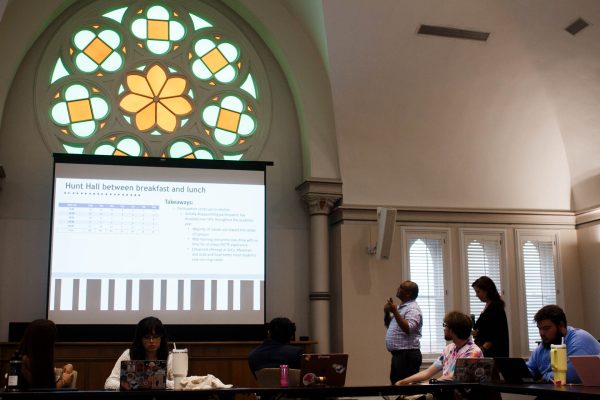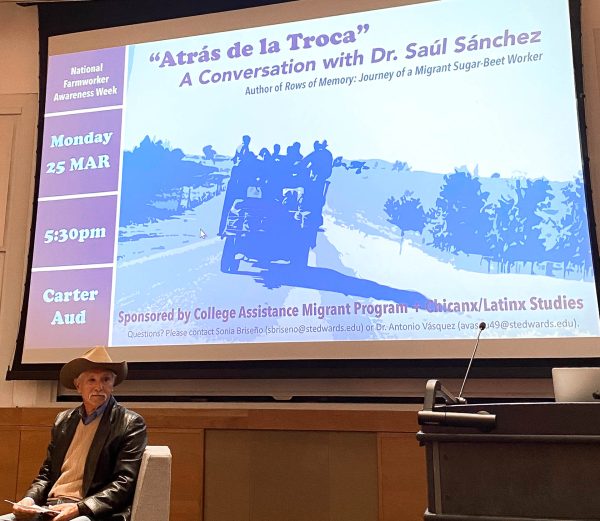H1N1 virus spreads throughout St. Edward’s
Over 145 St. Edward’s Univeristy students have been diagnosed with H1N1 flu symptoms, a number that is expected to increase dramatically, according to a university official.
Each week the Health Center diagnoses roughly 20 to 35 students with H1N1, a dramatic increase from the first two weeks of the fall semester when only two to six students were diagnosed, said Willard Pannabecker, director of the university’s Health and Counseling center.
“Next week there could be 50-75 cases,” Pannabecker said. “To put it into perspective, we had no cases of the flu this time last year.”
The cases of H1N1 are expected to increase in Texas and throughout the Southwest in the coming months, according to the Austin Office of Emergency Management.
Also, many students may have had H1N1 but have not gone to the Health Center.
Currently, the Health Center has so many appointments scheduled that it cannot see walk-ins.
“It is impossible to come to the Health Center and be seen right away,” Pannabecker said. “By 2 p.m. or 3 p.m., all the appointments for the next day are filled.”
Students will have to wait, at most, two days to get an appointment. However, this is better than the typical four to five days students at the University of Texas at Austin have to wait at their health center, Pannabecker said.
In order to prepare for the influx of students, the Health Center will be hiring additional help, Pannabecker said.
The university is also taking additional steps to control the spread of H1N1. Pannabecker, who is also responsible for the university’s flu plan, said nearly 20 different offices on campus are taking extra precautions. The computers in the library are wiped down daily with Clorox and the Physical Plant has installed roughly 70 hand sanitizer dispensers in computer labs and classrooms.
Residence Life also handed out small tubes of hand sanitizer to all of the students living in the residence halls, and has also developed a plan to get sick students anything they need, like food, said Pannabecker.
The university also ordered vaccines as part of their preparation plan, ordering almost 300 H1N1 vaccines and 500 seasonal flu vaccines. The Health Center only received 160 of the 500 seasonal flu vaccines ordered, and all of them have been administrated, Pannabecker said.
“Over the next two weeks, we might get 140 more seasonal flu vaccines,” said Pannabecker. “But, we’ll be lucky if we get 70 H1N1 vaccines.” We received word that we will receive another partial shipment of seasonal flu vaccines sometime this week, and the shots should be ready by early next week.”
When the vaccines arrive, the university has posters ready to advertise the shots in high traffic areas on campus, like Ragsdale Center and the new residential village, Pannabecker said.
“In order to receive the H1N1 vaccine, you will have to be between the ages of 18-24,” Pannabecker said.
College-age students, children, and the elderly are in the group that will be most susceptible to H1N1 on a college campus, according to the Center for Disease Control and Prevention.
“Absolutely get the vaccine,” Pannabecker said.
Yet some students on campus are worried about the safety of the H1N1 vaccine.
“I don’t feel like it’s been tested,” said senior April Wharton. “I’m just weary.”
However, Pannabecker said that the H1N1 vaccine presents a no greater risk than a normal flu shot.
“They are made the same way the seasonal flu shot is made, but it has the dead H1N1 strand instead,” said Pannabecker. “If it was possible, someone could get both shots on the same day; one in the left arm and one in the right arm.”
If students want to get the seasonal flu shot they can go to H-E-B or CVS Pharmacy. Both stores are selling the shot for $25.
Students who have had the H1N1 flu, like junior Kelli O’Donnell, said it isn’t a pleasant experience.
“It came on really fast,” said O’Donnell.
Her symptoms began with a cough, and within 24 hours, the symptoms turned into a high fever and horrible body aches, she said.
“I called the Health Center, but I couldn’t get an appointment until the next day,” O’Donnell said. “I was pretty upset that I couldn’t get an appointment when I was feeling the worst.”
Four days later, her fever broke, but she still felt really tired and exhausted for nearly a week.
“The fact that H1N1 lasts only for four to five days is the major difference between it and the seasonal flu,” said Pannabecker.
The H1N1 has a fairly short duration compared to the season flu, which can last a couple of weeks.
The best way to combat H1N1 is good personal hygiene, said Pannabecker.
“You are contagious nearly two days before you feel symptoms,” he said. “Students need to remember to use the hand sanitizer before you enter and after you leave a high traffic area.”











